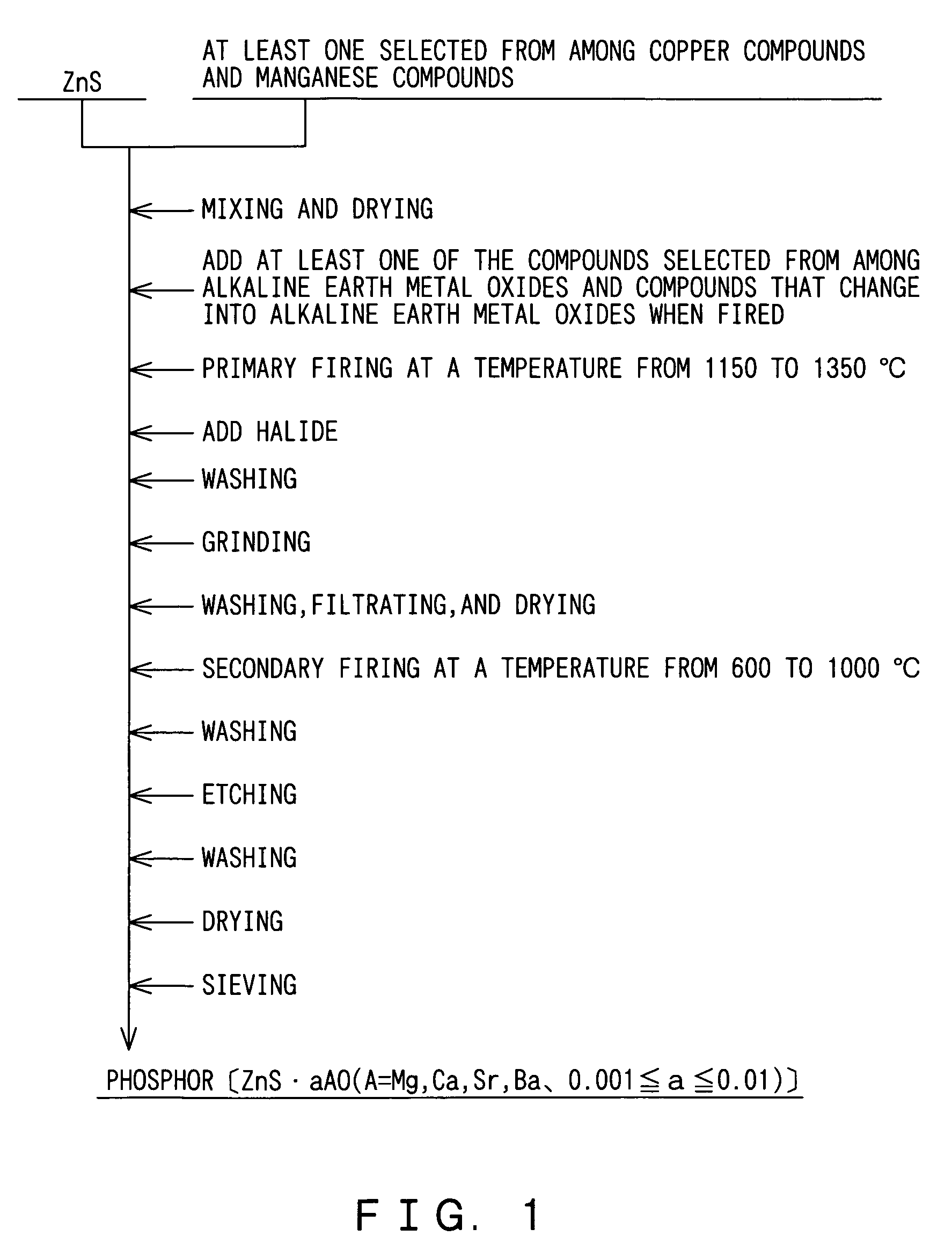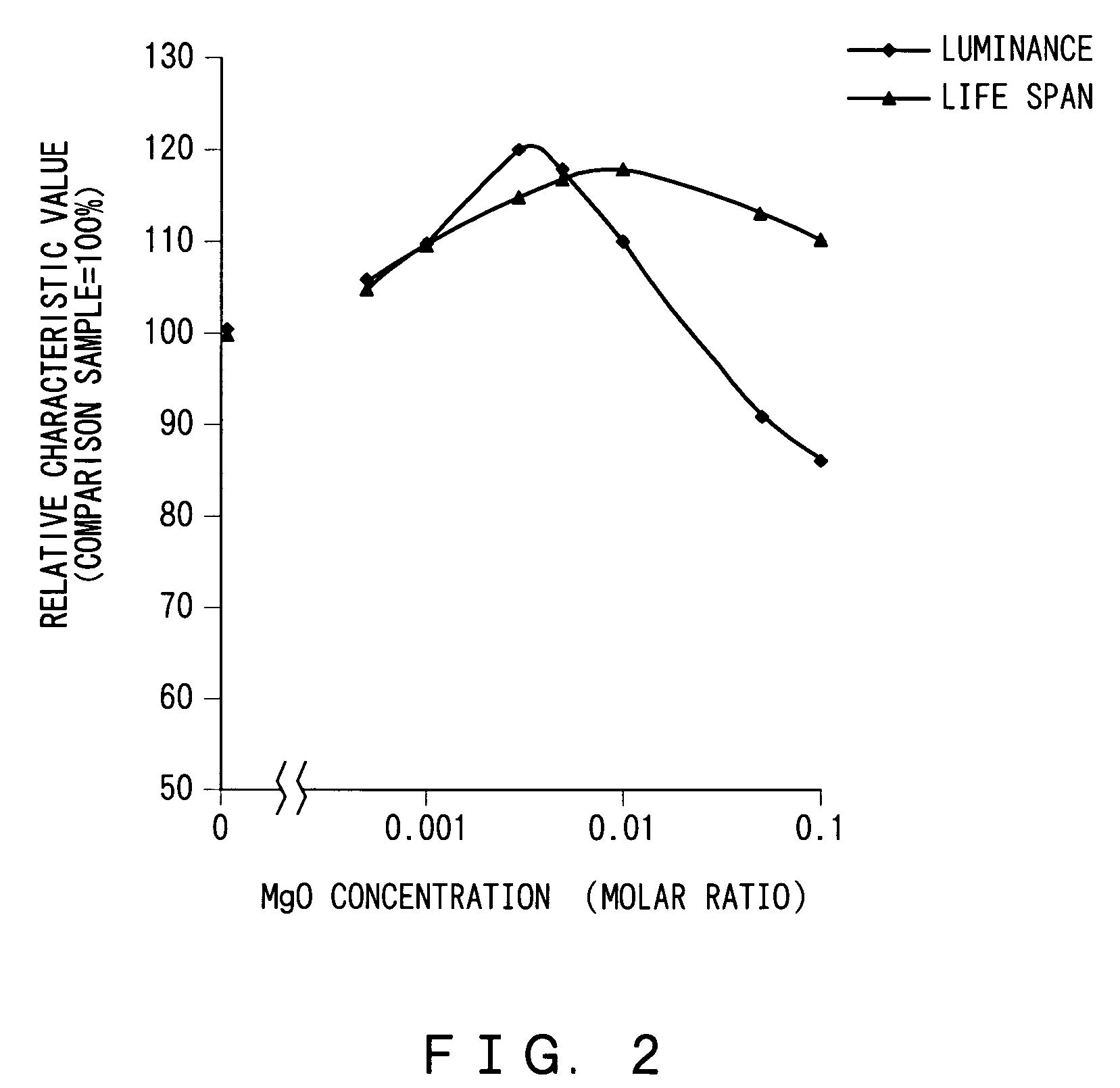Electroluminescent phosphor and its production method
a technology of electroluminescent phosphor and production method, which is applied in the field of electroluminescent phosphor, can solve the problems of affecting the luminance, unable to improve the luminance or life span of electroluminescent phosphor, and difficulty in introducing alkaline earth metal oxide into zinc sulfid
- Summary
- Abstract
- Description
- Claims
- Application Information
AI Technical Summary
Benefits of technology
Problems solved by technology
Method used
Image
Examples
working examples
[0028]Next, working examples according to the embodiment described above are explained.
[0029](Test 1)
[0030]First, a test was performed to evaluate the relationship between proportions of the alkaline earth metal oxide to the zinc sulfide and properties of electroluminescent phosphor, i.e. its luminance and life span.
[0031]In the manner described above, 500 g of zinc sulfide (ZnS) was dispersed in deionized water, and an aqueous solution of copper sulfate was mixed into the zinc sulfide-infused deionized water so as to make a mixture with copper concentration to the zinc sulfide being 0.05% by mass.
[0032]Thereafter, the mixture was dried at 120° C., and 0.62 g of magnesium oxide (MgO) was added to the mixture so that the molar ratio of the magnesium oxide to the zinc sulfide is 0.003. After chlorides that would serve as a crystal glowing agent, i.e. flux, are added to the mixture at a total mixing ratio of 8% by mass to the zinc sulfide, the mixture was thoroughly mixed. The chloride...
PUM
| Property | Measurement | Unit |
|---|---|---|
| temperature | aaaaa | aaaaa |
| molar ratio | aaaaa | aaaaa |
| temperature | aaaaa | aaaaa |
Abstract
Description
Claims
Application Information
 Login to View More
Login to View More - R&D
- Intellectual Property
- Life Sciences
- Materials
- Tech Scout
- Unparalleled Data Quality
- Higher Quality Content
- 60% Fewer Hallucinations
Browse by: Latest US Patents, China's latest patents, Technical Efficacy Thesaurus, Application Domain, Technology Topic, Popular Technical Reports.
© 2025 PatSnap. All rights reserved.Legal|Privacy policy|Modern Slavery Act Transparency Statement|Sitemap|About US| Contact US: help@patsnap.com



